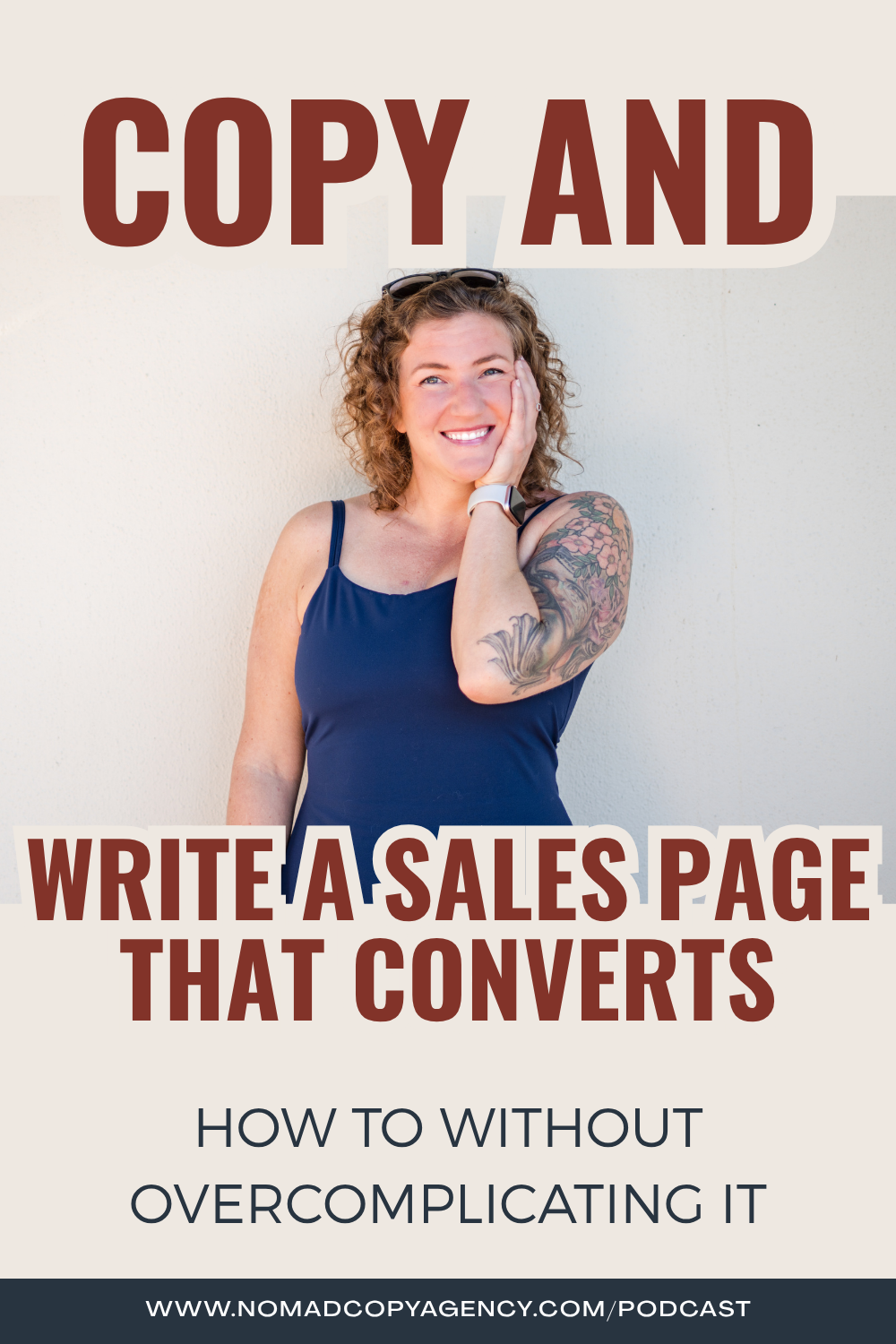How to Write a Sales Page That Converts (Without Overcomplicating It)
APPLE PODCASTS | SPOTIFY | YOUTUBE
This post is part one of four ‘how to write a great sales page’ posts.
Sales pages can feel intimidating. One Google search brings up endless templates, checklists, and “proven” formulas that often make your page longer and more confusing than it needs to be. The truth? A high-converting sales page is simple: it gives your audience exactly what they need to say yes.
In this post, I’ll walk you through:
What goes on a sales page
How long your page should be (based on your offer’s price point)
The difference between writing for skimmers vs. detail-seekers
And the #1 mistake most entrepreneurs make when building out their page
Consume this blog post in podcast form here:
Start Smart: Why Templates Don’t Always Work
Sales page templates can be helpful starting points, but they often lead you to a generic sales page that doesn’t convert. Most include every section under the sun: problem sections, about sections, module breakdowns, endless testimonials… but they aren’t personal. They don’t consider your specific offer or audience.
That’s why so many people end up with mile-long pages for a $37 product, or with copy that drags readers through pain point after pain point without ever highlighting the transformation.
I like to think of what needs to go on a given sales page like a salad bar: take what you need (what your client needs to hear) and only include what you’ll actually use (leave some of those useless template sections off!).
Writing Step 1: Know What Your Audience Needs
Before you write a single line, you need to know what your audience cares about. That means asking them questions like: What problems are they trying to solve? What solutions are they considering? What transformation do they want most?
When you know their answers, you can frame your page that tells a story: here’s what you want, here’s why your current path isn’t working, and here’s how this offer helps you get the transformation you’re looking for.
Step 2: Give Your Sales Page Structure
While every page will look different, here’s the flow most offers need:
Above the Fold – Tell them what you’re offering, why they should want it, and how to buy. Add a call-to-action immediately.
Problem Reminder (Optional) – Briefly remind them why their current path isn’t working—but don’t dwell here.
Possibility + Transformation – Show them what’s possible after working with you. This is where you sell the future they want.
Details + Authority – Add only what’s necessary: who you are, why you’re trustworthy, and any specifics your audience needs to feel confident.
Multiple CTAs – Every time you remind them of the transformation, ask for the sale again
Think of it like a rollercoaster: a quick dip into the problem, then a steady climb into all the benefits and possibilities. Keep the energy moving forward.
Step 3: Decide How Long Should Your Sales Page Be?
Length depends on your price point and how much information your audience needs to feel comfortable buying.
$0–$100 offers → One scroll or even a popup is enough. Keep it simple.
$100–$500 offers → Add a reminder of the problem, your authority, and why this is the right solution.
$500+ offers → Include more detail about what’s inside, dates, deliverables, and logistics. High fact-finders want the specifics.
The more expensive and complex the offer, the longer the page—but always tailor it to your people, not to arbitrary rules.
Step 4: Understand Different Buyer Types
Not all buyers behave the same way:
Skimmers read only the headlines and CTAs—make yours sharp and compelling.
High Fact-Finders read every detail—give them clarity and structure so they can find what matters.
Transformation-Seekers want to know what’s possible—lean into the future you help them create.
Problem-Focused Buyers need reassurance—acknowledge their struggle, but guide them toward the positive outcome.
A good sales page speaks to all four without losing momentum.
The Big Takeaway
A sales page doesn’t need to be long, clever, or complex—it needs to be clear, persuasive, and focused on transformation. Keep reminding your reader what’s possible when they say yes, and don’t be afraid to ask for the sale (over and over).
When you shift from selling features to selling outcomes, your sales page stops being a list of details—and becomes a powerful tool that turns readers into buyers.

